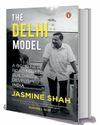
When she came to power in 1966, Indira Gandhi found India strategically boxed in. To the west and east were two wings of US-armed Pakistan, which had slapped a costly war on India a few months earlier. To the north was the Chinese dragon that had snatched away huge chunks of territory in the 1962 war. In the south, Sri Lanka was indifferent and often flirting with the western powers who were arming Pakistan. Further south in the deep ocean, the British and the Americans were talking of building a military base in Diego Garcia. In short, India saw only hostile elements on all sides—in the west, east, north and south. The Soviets were friendly, but were cold and distant.
Indira took three steps to break out of the box. The first was taken in the course of pursuing the second. The third came three years later. We will look at them one by one.
By mid-1971, it was clear that India and Pakistan were drifting towards a war over Pakistan’s handling of its eastern wing. The military regime based in the west had held an election but, advised by Zulfikar Ali Bhutto of the Pakistan People’s Party, it refused to acknowledge that the east-based Awami League of Mujibur Rahman had won the majority seats in parliament. The east revolted, the military regime sent troops to quell the unrest, and refugees poured into India in millions.
As war clouds gathered over the horizon, Indira grabbed a two-year-old offer of a loose friendship treaty from the USSR, and signed it in August 1971. As war with Pakistan broke out in December, and American warships steamed into the Bay of Bengal ostensibly to aid Pakistan, she invoked the treaty to get Moscow to tail them with nuclear submarines. Anyway, in 13 days, she won the war, and eliminated the threat from the east.
This story is from the June 09, 2024 edition of THE WEEK India.
Start your 7-day Magzter GOLD free trial to access thousands of curated premium stories, and 9,000+ magazines and newspapers.
Already a subscriber ? Sign In
This story is from the June 09, 2024 edition of THE WEEK India.
Start your 7-day Magzter GOLD free trial to access thousands of curated premium stories, and 9,000+ magazines and newspapers.
Already a subscriber? Sign In

Forging the future
As the curtain falls on 2024, I take pride in the extraordinary milestones achieved under the leadership of Prime Minister Narendra Modi. This year stands as a testament to the Modi government's resolve to forge a resilient and forward-looking Bharat. From groundbreaking advancements in infrastructure to visionary global initiatives, these efforts resonate deeply with the vision of Viksit Bharat.

Our strange democracy
Abraham Lincoln is lauded as among the very best presidents the US ever had: the statesman par excellence successfully steered the nation through the devastating and perilous years of the American civil war. Not only did Lincoln manage to keep his country united, he also ensured the passage of the 13th amendment to the US constitution, which abolished slavery.

Five years of post-pandemic fashion
It has been five years since we discovered what Covid-19 was, and five years since it disrupted the world forever. The World Health Organization activated their emergency systems on January 1, 2020, and informed the world by January 4, 2020. By the end of that week, they had set guidelines for various countries to follow. Comparable to the Spanish flu of 1918, more than 7 million people have died of Covid according to official data. Unofficially, no one has an idea. WHO has just this week asked China to provide critical data to understand the virus's origins as a “moral and scientific imperative”.

Community spirit
Rhythm of Dammam opens a window to the world of African-origin Siddis of Uttara Kannada

'Breaking' down a scandal
Society Girl is not just a case study of a high-profile death in Pakistan but also a stark commentary on media trials

Progress card
Jasmine Shah's book tells you what the AAP has achieved in Delhi in the last 10 years

SENSE IN NONSENSE
In his latest book of poetry, Ruskin Bond is at his funniest

Get ready for Trump bump
The ‘butterfly effect’ is a beautiful, mysterious metaphor of the planet’s interconnectedness.

QUIET FLOWS THE FAITH
The melding of an ancient amorphous faith and the latest science; of an antique tradition and new practices; ways of life older than memory and new expressions is happening at Prayagraj in Uttar Pradesh.

Trash to treasure
How a weed-choked Dal Lake spurred Maninder Singh's journey to become a waste management visionary